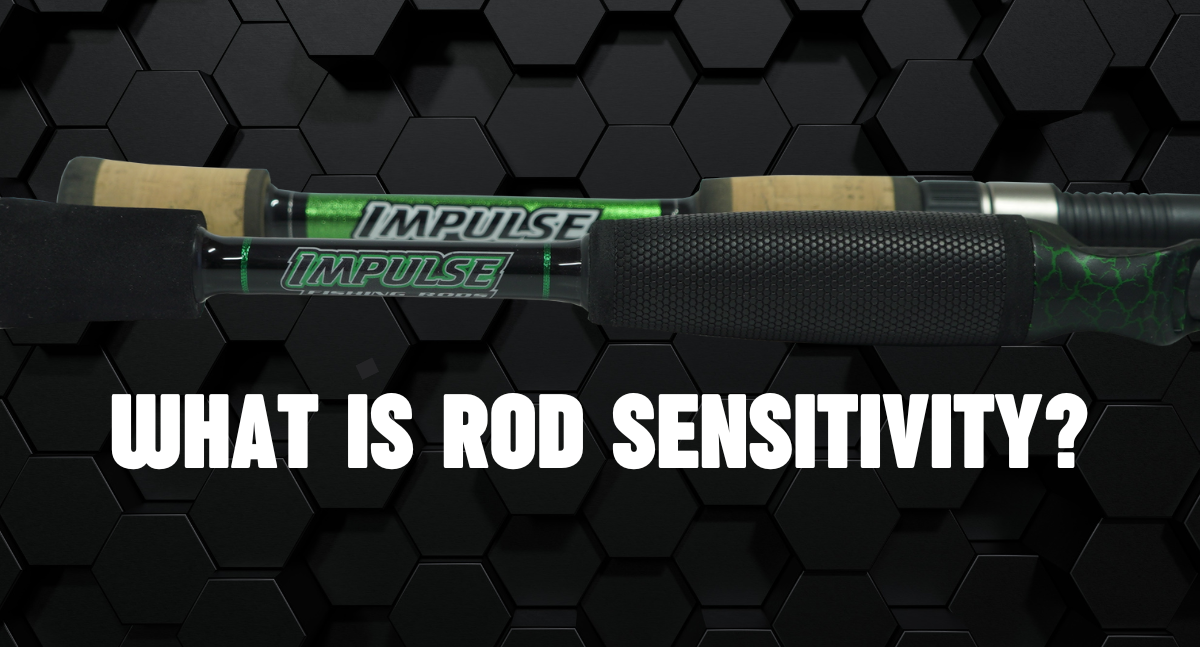Jun 26th 2023
Fishing Rod Sensitivity Explained.
Fishing rod sensitivity and how it can affect your success on the water.
Arguably one of the biggest struggles for new anglers, the hook set. This is common for multiple reasons, one of the biggest factors is being able to feel the bite which allows you to set the hook at the right time.
Why is this? Simply put, sensitivity. Most new anglers aren’t using the correct rod and tackle for the fish they are targeting. Which, when broken down makes plenty of sense as most new anglers aren’t dropping thousands of dollars on multiple rods and lures for various techniques, line, and lure ratings.
So, unless you have a fishing buddy with multiple rods you can borrow along with some tips and expertise, some level of struggle can be expected for new anglers.
Below we break down what rod sensitivity is, different rod material and how using the right line and tackle can have a huge impact on your fishing success. Hopefully this article will give you insight and direction as to what rod you need, while guiding you to making a better selection when choosing your next fishing rod so you can improve success on the water for your target species and technique you are after.
What is fishing rod sensitivity?
A rods sensitivity is going to be how well you can feel the “bite” when fishing lakes, ponds, reservoirs, etc. or the “bottom” which is crucial on any body of water that you are fishing on the bottom. With a sensitive rod you should also be able to feel when your lure bumps into brush, sticks or lay downs.
Depending on your technique, the sensitivity of a fishing rod can extremely important, whereas some techniques it is not so much. Because of this, technique specific fishing rods can give you the edge when targeting specific species of fish on a certain body of water. The more sensitivity a rod has the more likely you are to feel the “bite” and be able to get a good hookset to land the fish (and not miss it entirely).
What makes a fishing rod sensitive?
Simply put, the rod blank. Known for their sensitivity, graphite fishing rods are the most sensitive on the market due to the fact they can transfer vibrations better than rods made of fiberglass. But the rod blank isn’t the only thing that translates into sensitivity. The rods design will impact how well an angler feels “bite” or “bottom” as mentioned above.
Blank exposed reel seats will give a rod more sensitivity. As well as cutting down the reel seat like we do here at Impulse, it allows you to put your finger on the blank in front of the reel. More contact with the blank means more sensitivity. Without cutting it down, anglers wouldn’t be able to reach that far up the rod comfortably.
Fishing rod sensitivity in order from most sensitive to least.
Graphite Rods: The king of sensitivity, fishing rods designed with graphite blanks will offer anglers the most sensitivity.
Composite Rods: A mixture of graphite and glass .Second to graphite fishing rods, composite rods make it possible to get actions that are much harder to get with pure graphite. Many of these composite rods make great Crank Bait rods.
Fiberglass Rods: Fiberglass rods are designed with glass fiber and resin. These durable, more budget friendly rods are perfect for beginners as they can withstand more abuse and harsh movements typically seen with inexperienced anglers.
How does fishing line affect sensitivity?
The next biggest factor in sensitivity, your fishing line is going to help dictate the amount of sensitivity felt. And, to get the most sensitivity out of your fishing rod, you are going to want to stay within your rod’s line rating.
What’s that you ask? Well, fishing rods are designed with “line ratings”. These ratings are there to help maximize the rods sensitivity. Using a smaller weighted lure with a ½ oz weight on a rod designed for 3 – 7 oz will make it more difficult to feel a bite or the bottom. The same works in reverse, using a 4 oz lure on a rod designed for a ½ - 1 oz weight will leave your rod constantly “bent” lessoning the ability to feel bites or the bottom.
Fishing line sensitivity in order from least to most sensitive.
Braided Fishing Line Sensitivity: Braid is the most sensitive fishing line that you can use. This is due to its zero stretch properties.
Fluorocarbon Fishing Line: Next in line to braided fishing line is fluorocarbon. Offering less stretch than mono, fluorocarbon makes a great leader or mainline for all types of species and techniques.
Monofilament Fishing Line: The line with the most stretch of them all, monofilament.
Technique specific rods and sensitivity.
As mentioned above, using technique specific rods offers anglers better sensitivity and will help them get the most out of their rods. Since its founding, Impulse Fishing Inc. has designed its various rod models for anglers looking to utilize rods for specific methods, rather than only manufacturing general-purpose rods (we do offer some though).
This has helped anglers improve their capabilities and catch more fish due to the fact they are using “the right tool for the job”. And, while having 15 rods for every technique may not be in the cards for a lot of anglers. Utilizing the information above, you can set out to find the best rod for the species of fish you’re planning to target.
If you have questions about a specific rod material, a technique you fish a lot and want some general information on selecting the right fishing rod, don’t hesitate to reach out to our customer support team to help steer you in the right direction.

